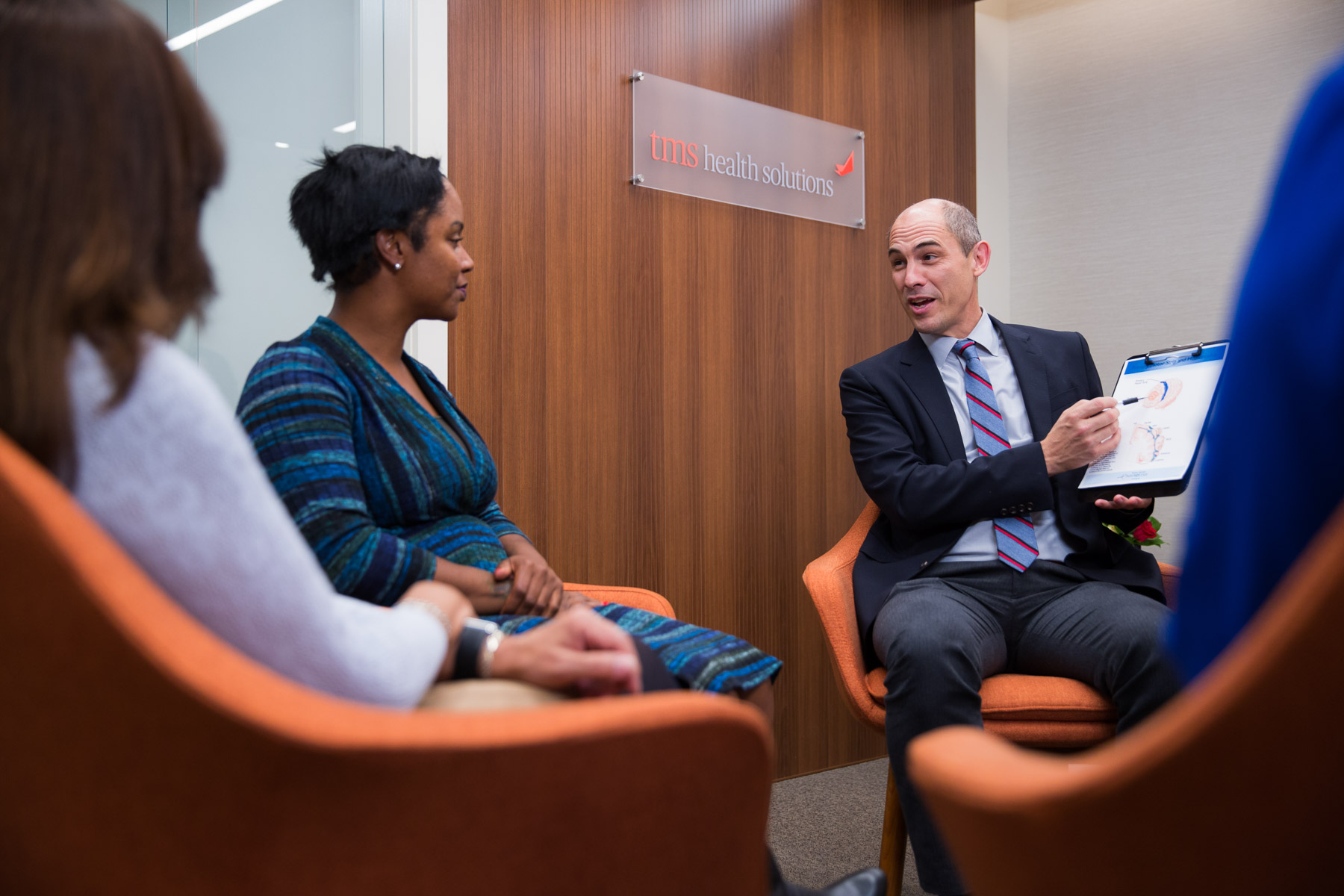By Richard A. Bermudes, MD, Mindful Health Solutions Chief Medical Officer
When I first started utilizing TMS in 2009, it seemed as if every patient responded. However, a good number of patients do not benefit at all from the treatment and have less than a 25% reduction in their baseline depression score (Fitzgerald et al. 2016). At the recent annual meeting, much of the research presented focused on improving TMS outcomes.
Martijn Arns presented data on combining psychotherapy and TMS that was recently published in Brain Stimulation. This was a large naturalistic study involving 196 patients. The average patient received 20 sessions of TMS administered to the right or left frontal region. While getting TMS, patients received psychotherapy from a psychologist trained in both psychotherapy and TMS.
66% of the sample achieved a 50% reduction in their baseline Beck Depression Inventory (BDI) and 56% of the sample obtained remission (BDI <12). This is striking given most patients receive over 30 sessions of TMS therapy and with each session 3000 pulses. Does combining treatments improve response and remission rates? It may also decrease the number of sessions and stimulations required to respond.
This study provides a preliminary signal that combining psychotherapy with TMS may improve outcomes. Response and remission rates were not significantly different between patients who received left-sided treatment and those who received right-sided treatment, indicating that even with the more disruptive left-sided treatment, psychotherapy may be practical. However, there are several limitations to the study including the naturalistic design, the variability in psychotherapy intervention and the lack of randomization and control.
Another study published in the Journal of Affective Disorders evaluated the outcomes of combining a behavioral activation (BA) intervention and TMS in eleven depressed patients (Russo et al. 2018). TMS technicians and staff physicians received eight hours of BA training from a psychologist. During the check-in process technicians asked patients about their BA goals. Technicians were also instructed to problem solve when there was difficulty with goal setting or with reaching a goal. Patients received an average of 33 TMS treatments and the average patient accomplished 14 of 18 goals. Post-treatment depressive scores were significantly lower.
This type of program may be more feasible to implement particularly in communities where there is a shortage of adequately trained clinicians in empirically supported psychotherapies. Furthermore, it likely enriches the treatment experience for patients and technicians.
Most of us intuitively believe combining psychotherapy and TMS will improve outcomes. Activating the brain during magnetic stimulation seems like a no-brainer! I received training in cognitive behavior therapy at the Beck Institute and I have seen many patients benefit from the treatment. However, my enthusiasm is somewhat tempered as combining psychotherapy and medication has not proved to be a revolutionary treatment. Outcomes are mixed with only those who have severe and chronic depression benefiting (Guidi et al. 2015). Although psychotherapy is often seen as a mode of treatment with little to no risk, estimates are that between 3% and 15% of patients have unwanted effects (Linden 2013).
What is the proper combination of treatments for depression? Should all patients receive combination treatment? What role does the sequence of treatments play? Does combining treatments improve durability? What role does the therapeutic alliance play? Certainly, combining psychotherapy and TMS can add to a favorable patient experience, something that is often compromised as we drive our healthcare services towards efficiency and productivity.
Fitzgerald, P. B., Hoy, K. E., Anderson, R. J., & Daskalakis, Z. J. (2016). A study of the pattern of response to rTMS treatment in depression. Depression and anxiety, 33(8), 746-753.
Guidi, J., Tomba, E., & Fava, G. A. (2015). The sequential integration of pharmacotherapy and psychotherapy in the treatment of major depressive disorder: a meta-analysis of the sequential model and a critical review of the literature. American Journal of Psychiatry, 173(2), 128-137.
Linden, M. (2013). How to define, find and classify side effects in psychotherapy: from unwanted events to adverse treatment reactions. Clinical psychology & psychotherapy, 20(4), 286-296.
Donse, L., Padberg, F., Sack, A. T., Rush, A. J., & Arns, M. (2018). Simultaneous rTMS and psychotherapy in major depressive disorder: Clinical outcomes and predictors from a large naturalistic study. Brain stimulation, 11(2), 337-345.
Russo, G. B., Tirrell, E., Busch, A., & Carpenter, L. L. (2018). Behavioral activation therapy during transcranial magnetic stimulation for major depressive disorder. Journal of affective disorders, 236, 101-104.
Linden, Michael. “How to define, find and classify side effects in psychotherapy: from unwanted events to adverse treatment reactions.” Clinical psychology & psychotherapy 20.4 (2013): 286-296.
Calkins, Amanda W., et al. “The effects of computerized cognitive control training on community adults with depressed mood.” Behavioural and cognitive psychotherapy 43.5 (2015): 578-589.
Siegle, Greg J., Frank Ghinassi, and Michael E. Thase. “Neurobehavioral therapies in the 21st century: Summary of an emerging field and an extended example of cognitive control training for depression.” Cognitive Therapy and Research 31.2 (2007): 235-262.
Siegle, Greg J., et al. “Toward clinically useful neuroimaging in depression treatment: prognostic utility of subgenual cingulate activity for determining depression outcome in cognitive therapy across studies, scanners, and patient characteristics.” Archives of General Psychiatry 69.9 (2012): 913-924.

